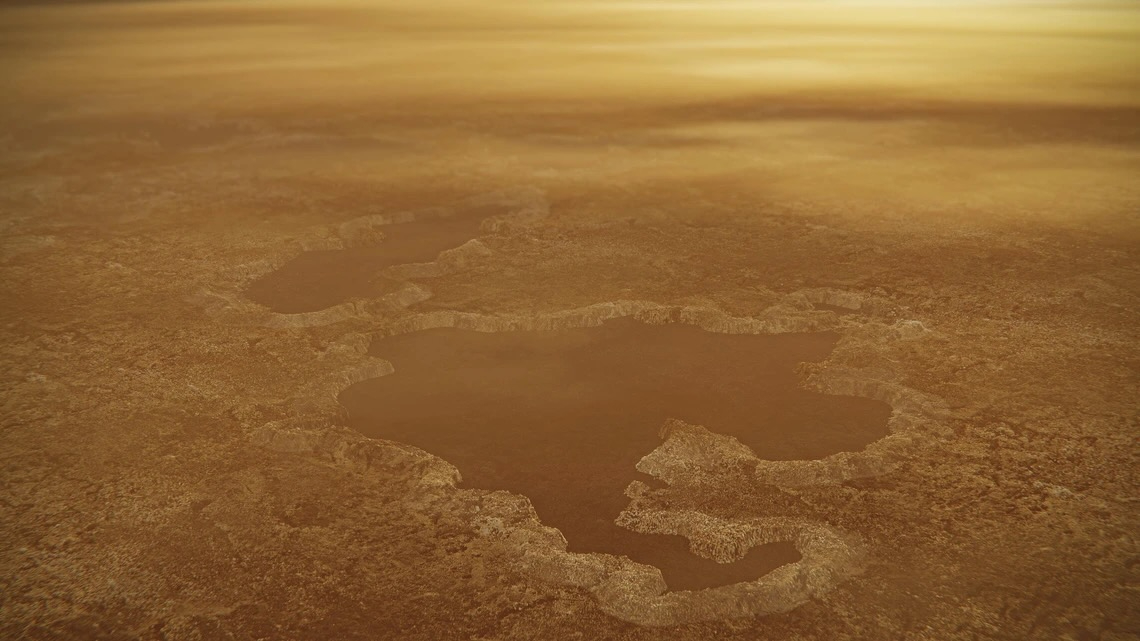Thousands of tiny 'ice needles' may explain mysterious stone patterns on Earth … and Mars
These stunning patterns have an unlikely designer

Some of the most breathtaking zen garden patterns on the planet owe their existence to an unlikely artist: thousands of tiny "ice needles." From swirls to circles to orderly rows, each delicate design is created when similarly-sized stones clump together across a landscape.
New research published Oct. 5 in the Proceedings of the National Academy of Sciences documents, for the first time, how ice needles create intricate patterns of stone in various landscapes. As ice needles freeze, they nudge small rocks to one side or another. Over time, the rocks become concentrated in one area, forming a design. The work confirms more than a century's worth of scientific speculation about the relationship between ice needles and stone patterns, said study coauthor Bernard Hallet, a geologist at the University of Washington. And it might shed light on the origins of an even more mysterious set of patterns — ones found on Mars.
Related: Snowflake gallery: no two alike, of course
Ice needles form when there is an imbalance between the temperature of moist soil and the temperature of the air. At night, certain types of dirt "exhale", contracting with the drop in temperature. Simultaneously, water in the soil is drawn upward by capillary action, the molecules of water sticking to the sides of very narrow pores in the ground. But as this water rises and hits the frosty air, it turns to ice, freezing into a crystalline needle-like shape.
"Sometimes they are very striking," Hallet told Live Science. "And they’re quite common." If you’ve ever walked over "crunchy" ground early in the morning, you’ve probably crushed some ice needles without realizing it.
For a long time, scientists associated these tiny ice sculptures with the intricate patterns of lines and swirls that sometimes appear on pebbly ground, like the striped landscapes around Hawaii's volcanoes.

What they didn’t know was exactly how ice was able to trace these designs without any intervention from living things. So they started investigating.
Get the Space.com Newsletter
Breaking space news, the latest updates on rocket launches, skywatching events and more!
The researchers covered a flat 1 by 1 foot (.4 meter) square of soil with uniformly small, regularly spaced stones. Then they ran the patch through 30 freeze-thaw cycles, allowing ice needles to form and melt away. Slowly, almost imperceptibly, the rising and falling needles pushed the pebbles to one side, driven by tiny environmental imbalances, such as the landscape's slope. Because a pile of stones is heavier than a single pebble, ice needles aren't able to push the stones once they reach a high enough concentration. By the end of their experiments, the team noticed zen garden-like patterns beginning to form: stones on one side, and bare ground on the other.

"So this tendency for stones to move toward stony domains is a very, very strong one," said Hallet. Stones on flat ground tended to form loops and swirls, while stones on a gentle slope tended to organize into rows.
Not all soil is porous enough to form ice needles; generally, soils high in silt or organic matter work best, according to research published in the journal Arctic and Alpine Research. Similarly, not all climates will produce needle ice. It will only form in areas where the ground is moist and the air cools down rapidly.
Experts believe that a subtler version of this cycle may be behind the patterns on Mars examined by NASA’s Curiosity rover. While the Martian atmosphere is very low in water, the Red Planet’s soil does show some evidence of tiny ice crystals, according to NASA’s Kennedy Space Center. As this dirt heats up, it expands slightly, only to shrink again as it cools.

Though this process is much less dramatic than ice needles pushing aside stones, it can still cause tiny pebbles and dust to shift over time. On Earth, Hallet said, the fine patterns from such minute soil expansions and contractions might go unnoticed. But on Mars, "because there’s so little going on except for the wind, we see these features."
Sadly though, science is yet to discover any Martian ice needles.
Originally published on Live Science.
Join our Space Forums to keep talking space on the latest missions, night sky and more! And if you have a news tip, correction or comment, let us know at: community@space.com.

Joanna Thompson is a science journalist and runner based in New York. She holds a B.S. in Zoology and a B.A. in Creative Writing from North Carolina State University, as well as a Master's in Science Journalism from NYU's Science, Health and Environmental Reporting Program. Find more of her work in Scientific American, The Daily Beast, Atlas Obscura or Audubon Magazine.










